HI and welcome to a new month of fishing. In this article I talk about how to catch mulloway and some of the misconceptions regarding them.
This is a very secretive subject. People can fish for 30 years without catching a jewfish, and with very few fishos willing to give out information, where do you start? The jewfish questions we are frequently asked include: how old are they at what size? On what moon phase and tide should I target them? Where can I catch them? What lures should I use? What bait and where to get it? Do I need to spend big money on gear? These are just some of the questions we are asked all the time, so let’s get into answering them and dispelling the myths.
But first, a bit of information on the species. Mulloway (argyrosomus japonicus) are found right along the eastern, southern and western seaboards and grow to a massive 2m in length, weighing up to 70kg. They can be caught day and night and the bag limit for mulloway in NSW is two fish over 70cm while in Queensland you can keep two fish over 75cm. Now let’s get into those questions.
How old are they at what size?
Jewfish grow faster if there is a lot of bait around and they are able to feed more regularly. Some jewies of about 120cm have been recorded as being eight to 10 years old while other 120cm jewfish have been aged at 30 years, so it all depends on where you caught it and how readily it has been able to access food.
What moon phase and tide?
The biggest misconception or myth regarding jewfishing is moon phase. Many people think that to target jewfish you have to work the moon phase and go from there. This is totally not true and I have regularly caught and seen jewfish landed on every single moon phase.
So when is the best time to target them? Well I watch the tides. You will have a magic window of about two hours running from one hour before high tide to one hour after. However, you can enlarge this window if fishing from a kayak or boat by simply following the tide in and back out of a river, fishing all the holes on the way.
Where can I catch them?
Jewfish often move from the ocean to rivers, so I usually find where the ocean meets a river and begin researching where all the holes are by looking at the Navionics website or chart and marking all the holes and drop-offs near rock walls and breakwalls in the river. Breakwalls are great places to start looking if you are land based because a lot of the time jewfish will patrol up and down breakwalls.
This is where the tide comes into play because when the tide is coming in the bait will be pushed in close to the wall and the jewfish will be close by, waiting to strike. As the tide goes out, the bait moves out from the rocks and a lot of the time you will land the jewfish on the change or 30 minutes after. If you are land based, look for the holes at the end of breakwalls or drop-offs. And most of the time you only have to cast 10m because they will be sitting right at your feet.
What lures to use?
Loads of lures are on the market but if you are just starting out, the best bet would be soft plastic vibes such as the Jackall Transam and Samaki Vibelicious. Nearly every lure company has a soft vibe nowadays and they are very good at catching jewfish. The trick is to go slowly. Jewfish don’t like big movements, so cast out and let the lure hit the bottom before starting a slow lift, slow double hop or slow roll retrieve.
If the fish are sitting in the top of the water column, other lures I use include 100mm flickbaits or fish profiles in silver or white. Hard-bodies in the same colours will also work, but make sure they have no rattles.
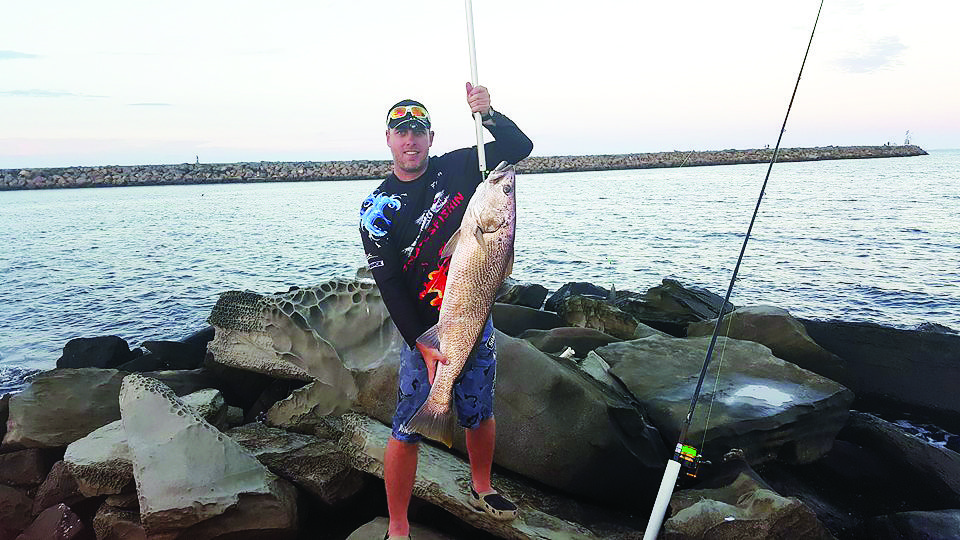
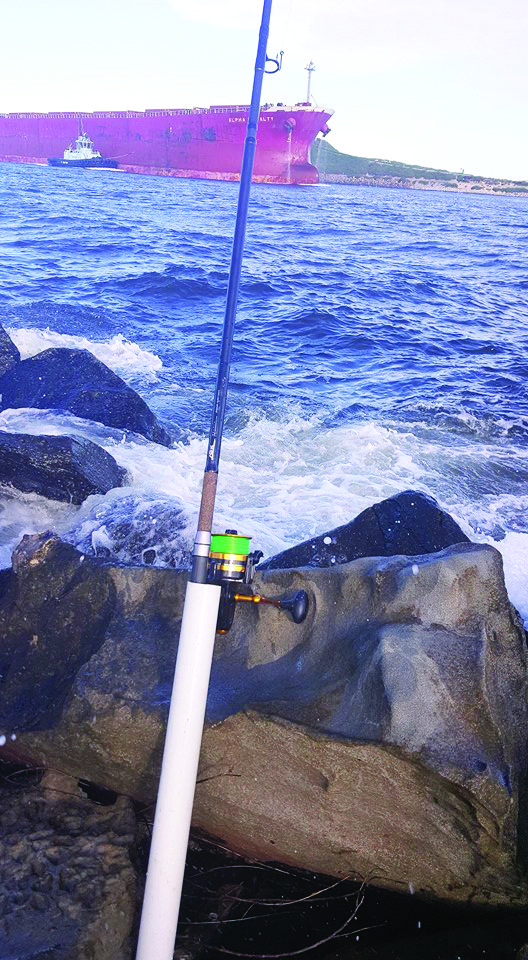
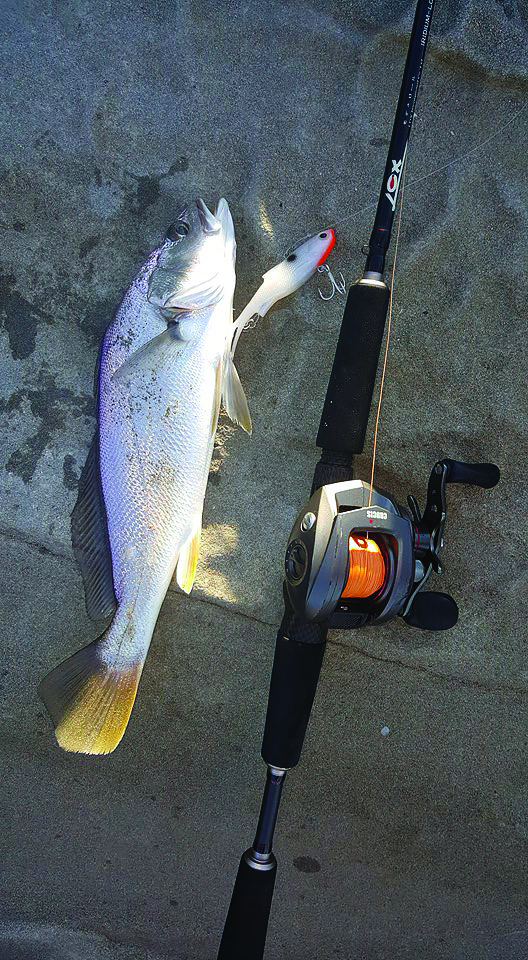
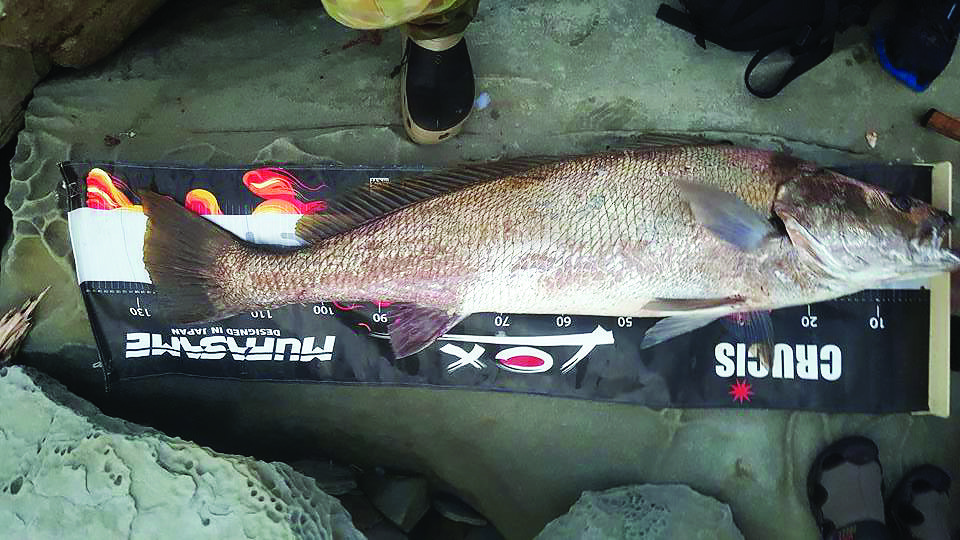
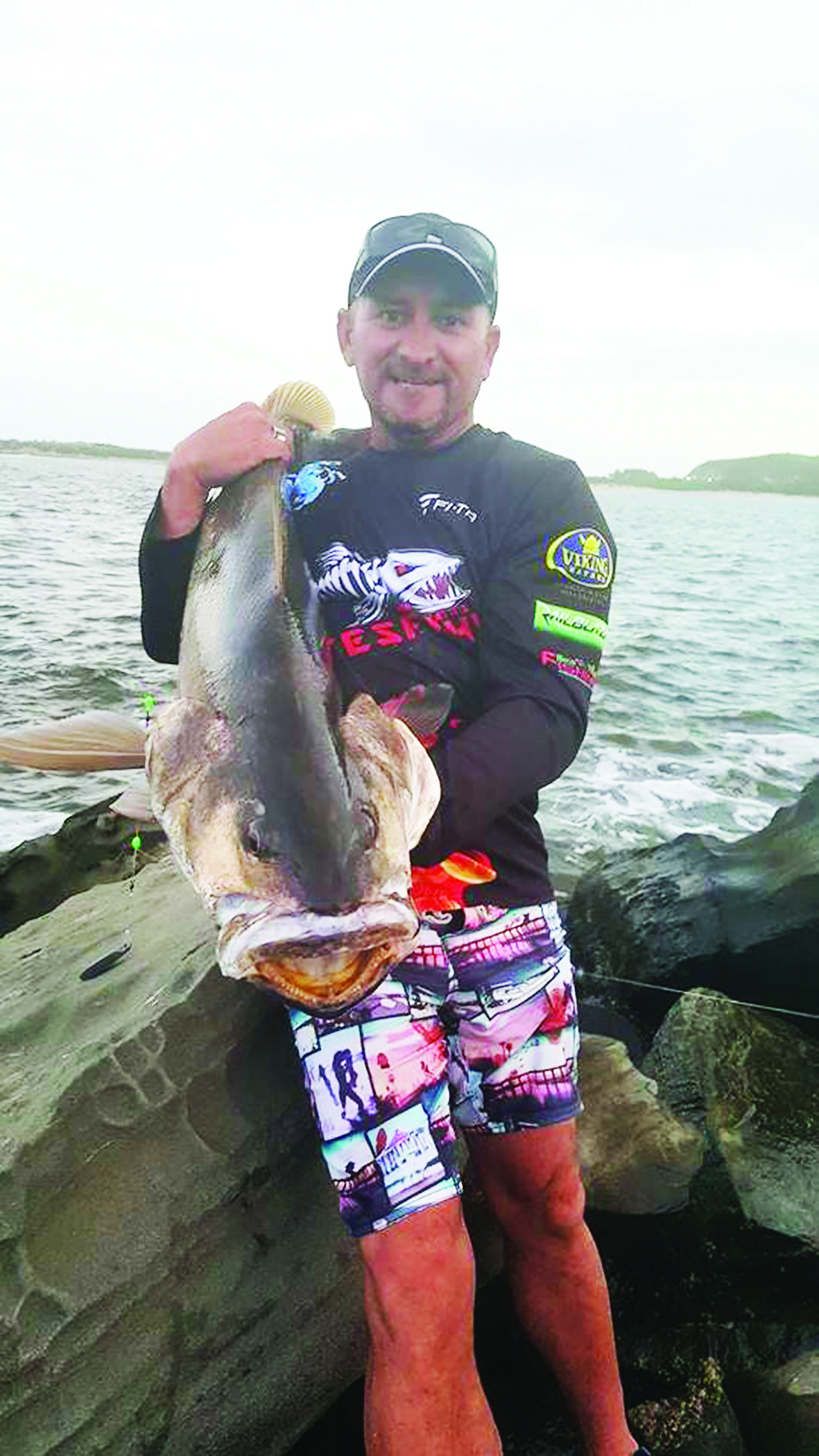
What bait and where to get it?
You can’t beat yellowtail yakka and beach worm baits for jewfish. Other baits you can use include mullet, tailor and herring. The big jewfish in the photos were caught on live yakkas and herring, but if you are unsure of what bait to use, the simplest way to find out is to grab a bait jig, cast it out and find what bait is around.
If all you can jig are yakkas, then use them. When hooking the bait on a live bait rig I usually pin the hook through the lower jaw and out through the nose or just a bit below the head, being sure not to hit the spine.
This allows the fish to stay alive longer and gives you a better chance of hooking a jewfish. Most baitfish are found either around rock walls or in deeper water with structure such as shipwrecks or weedy bottoms.
Do I need to spend big money on gear?
Yes and no. Invest in a decent rod and reel, because with these you get what you pay for, but don’t spend much on the rest. Nath and I each have two different setups.
We use a Lox Iridium three-piece 10-15kg surf rod. One of the jewies pictured weighed 20kg, which shows how much grunt these rods have. Paired to that rod is an old-school Penn Spinfisher 850 with 30 or 40lb main line and leader. Nath on the other hand uses the same rod but with an Okuma 8000 baitrunner reel and 30-40lb line and leader.
If using lures, I run a 6’ Lox Iridium 4-10kg baitcaster paired to a low-profile Lox Crucis reel spooled with 15lb main line and leader because you don’t have to cast a mile. This rod is great for controlling your lures. Nath likes to use a 7’ Lox Iridium 2-5kg light snapper rod with a 3000 or 4000 reel and 15lb main line and leader.
For more information on Lox rods, visit www.loxfishing.com and check out the awesome range. As for the rest of the gear, all you need is a small aerator and 20-litre bucket for the live bait, a gaff (long or short depending on where you are fishing) and some live bait or circle hooks in 9/0 or 11/0.
Adjust your sinker size depending on depth and tide movements. Add some glow beads, swivels and sliding sinker clips and that’s all you need to start fishing for jewies. If you fish more often, upgrade to a bigger live tank and perhaps buy a cart to carry all your stuff and make life easier.
Well I hope this helps get you started catching mulloway. If you have any questions, hit us up on the BNB website or our 2 Mates Fishin Facebook page. Until next month, happy and safe fishing.
 Bush 'n Beach Fishing Magazine Location reports & tips for fishing, boating, camping, kayaking, 4WDing in Queensland and Northern NSW
Bush 'n Beach Fishing Magazine Location reports & tips for fishing, boating, camping, kayaking, 4WDing in Queensland and Northern NSW

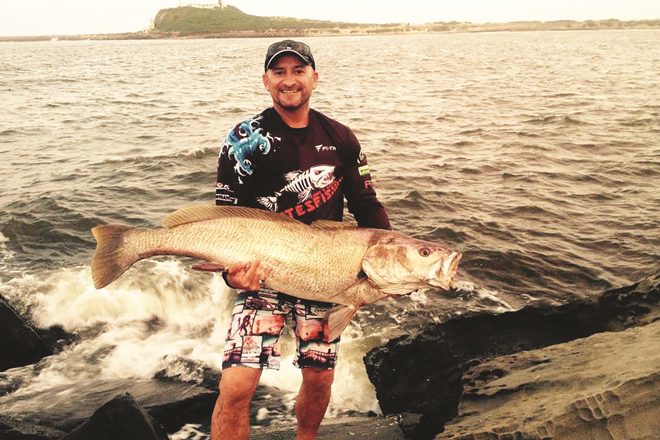




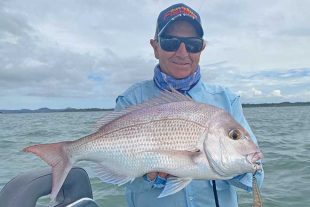
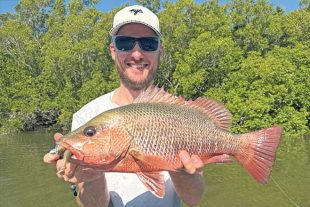

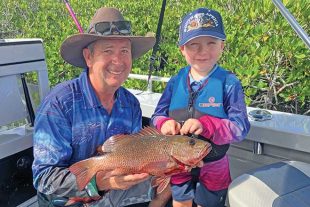
We have had no problems catching mulloway off patenoster rigs. Flasher rigs with live bait really help.these picky bottom dwellers
Hi, I am trying to find some good spots in Newcastle which are fairly easy to access. I was wondering if you think the break wall near pirate point would be a good spot for jewfish, compared to Stockton break wall which has so many different spots along it to try.